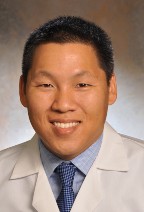PainRelief.com Interview with:
Dao Minh Nguyen, MD, MSc FRCSC FACS
Thoracic Cancers Group Go-Lead
Sylvester Comprehensive Cancer Center
University of Miami Miller School of Medicine

PainRelief.com: What is the background for this study?
Response: Patients undergoing thoracic surgery operations experience significant acute incisional pain as well as chronic pain many months after.
The mainstay of treatment is based on frequent use of potent and addictive-prone opioids such as hydromorphone, oxycodone at high dosages and long duration.
There is a high incidence of persistent opioid users and chronic opioids users in surgical patient population. This certainly contributes to the opioid epidemic in the USA and worldwide.
We implemented a peri-operative care protocol for patients undergoing thoracic surgery operations called Enhanced Recovery after Thoracic Surgery (ERATS). The overarching goal of ERATS is to streamline care for thoracic surgery patients particularly in the postoperative period to mitigate pain with opioid-free strategy, to minimize postoperative complications, rapid return to baseline states and safe, early discharge home. This protocol follows guidelines of the ERAS principles and is developed for thoracic patients to address their unique needs.
Once pain is adequately addressed with opioid-free strategy with elimination of opioid-associated side effects, rapid recovery after surgery can be achieved.




